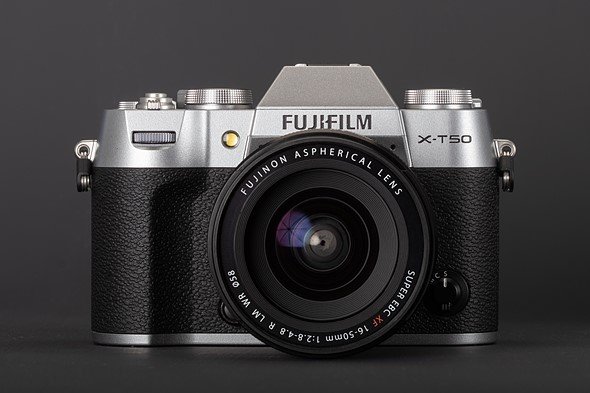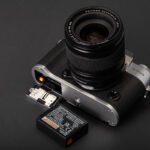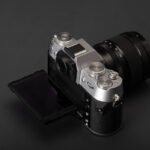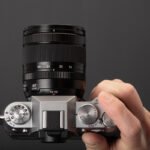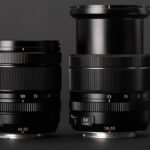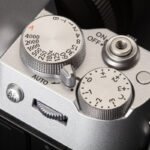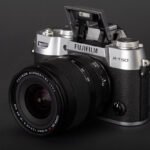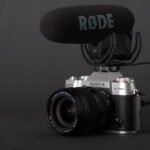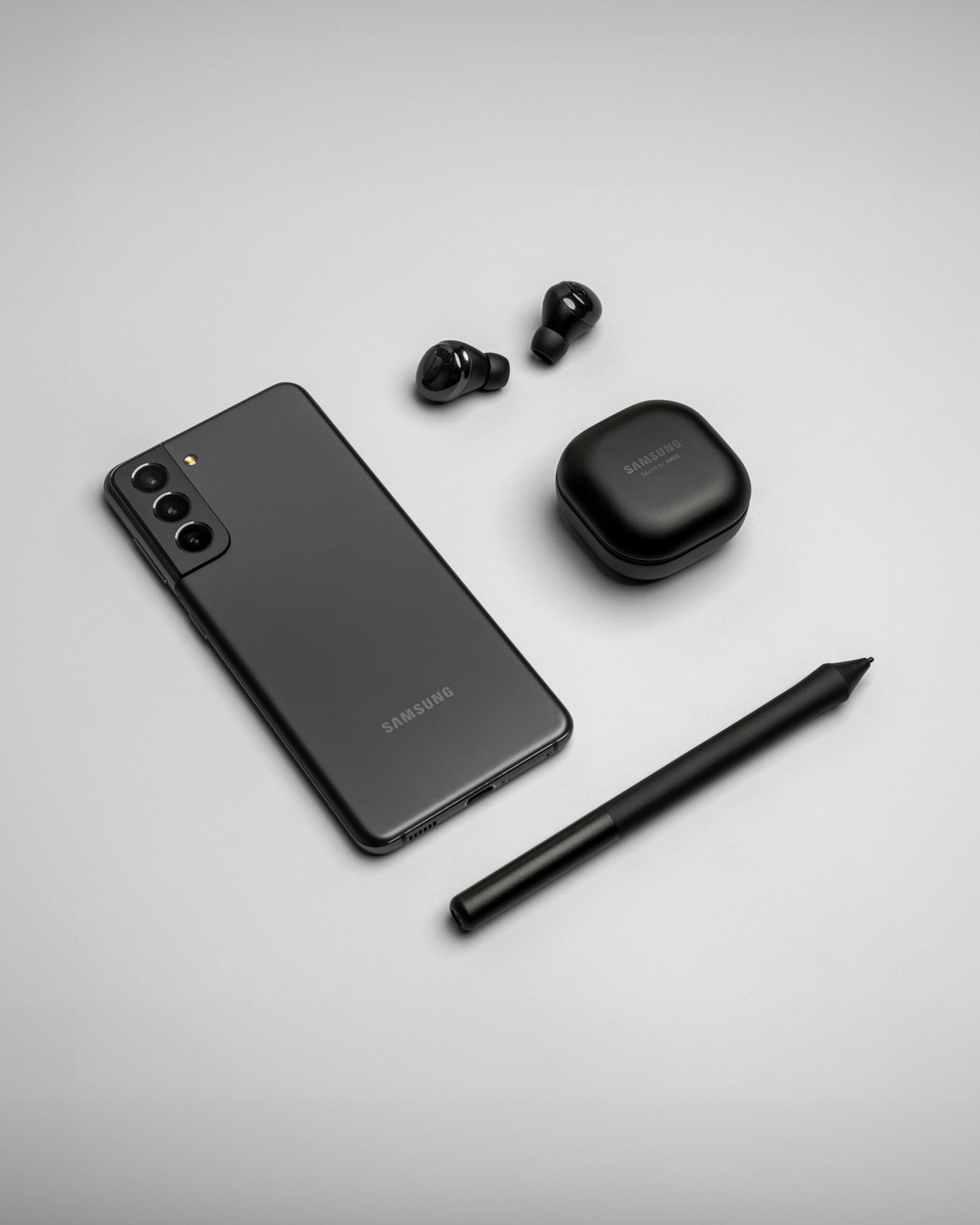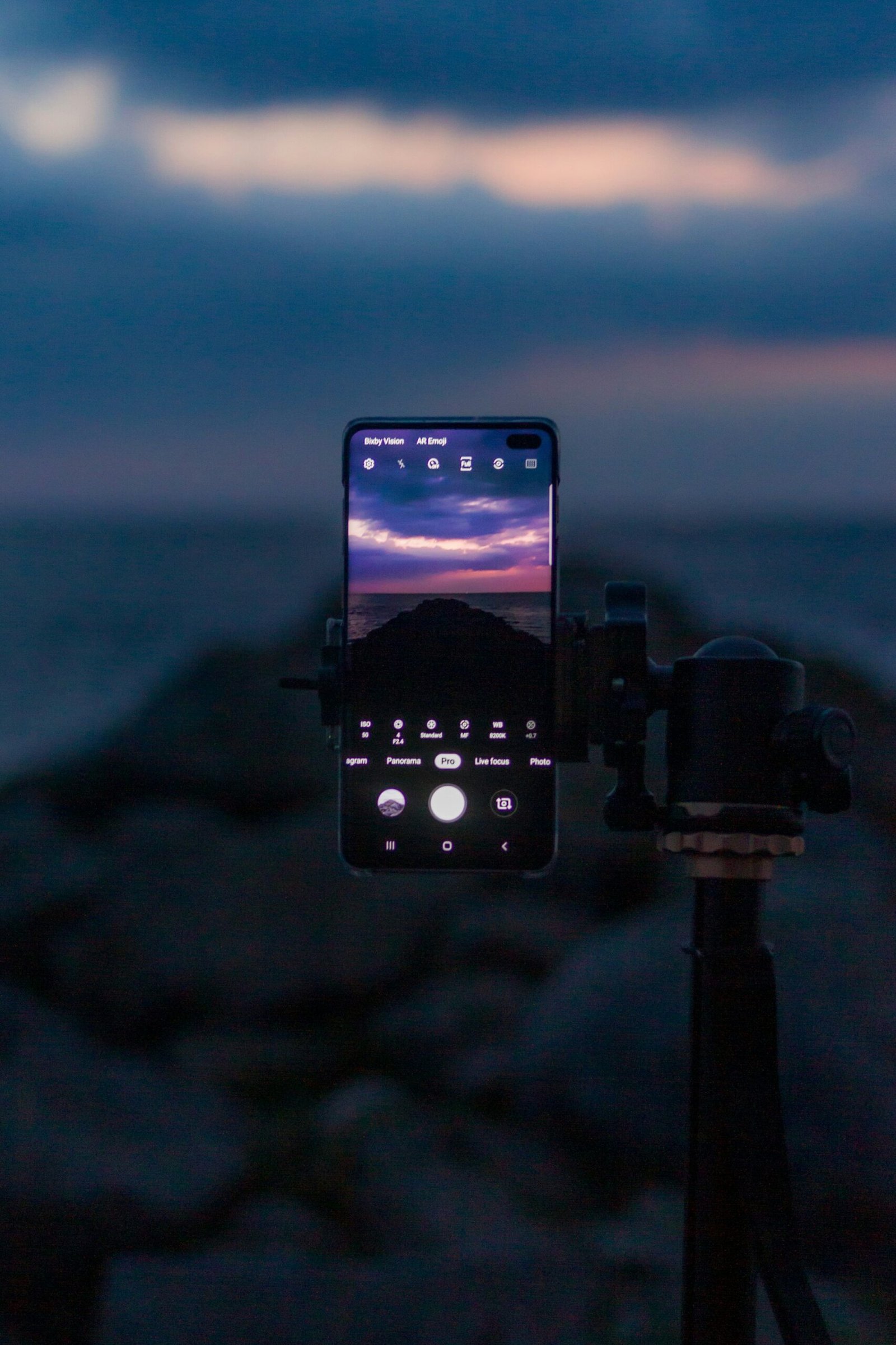Don't miss our holiday offer - 20% OFF!
Fujifilm X-T50 Review: Mid-Range X-T Goes Steady
The Fujifilm X-T50 sits comfortably within the X-T series as a mid-range camera designed to appeal to enthusiast photographers. Enthusiasts, often straddling the line between amateur and professional photography, seek devices with robust performance capabilities yet within an affordable price range. Thus, the X-T50 fulfills this demand with a harmonious blend of quality and cost-effectiveness.
The design philosophy of the X-T50 builds on the legacy of its predecessors, maintaining the retro aesthetic that has become synonymous with Fujifilm’s X-T series. However, it introduces subtle enhancements to improve user experience and functionality. The camera’s compact and lightweight body makes it incredibly portable, ideal for photographers who require mobility without sacrificing image quality.
Notable improvements in the X-T50 include advanced autofocus capabilities, an intuitive interface, and enhanced digital connectivity options. These features make it a versatile tool suitable for various photography genres—from street to landscape to portrait photography. The addition of a newly designed sensor and processor aims to deliver superior image quality, allowing photographers to capture stunningly detailed images even in challenging lighting conditions.
Significantly, the X-T50 features an improved electronic viewfinder and a tilting touchscreen display, which provide greater flexibility and control during shooting and composition. These elements reflect Fujifilm’s commitment to delivering user-friendly and innovative tools that cater to the evolving needs of modern photographers.
Overall, the Fujifilm X-T50 stands out as a mid-range camera that does not compromise on key features, offering a balanced mix of performance and price. For enthusiasts looking to elevate their photography without overstepping their budget, the X-T50 presents an attractive proposition, weaving together the best of form, function, and affordability.
Design and Build Quality
The Fujifilm X-T50 is a continuation of the renowned X-T series, renowned for bridging the gap between sophisticated performance and accessible usability. Holding the X-T50, one immediately notices its balanced heft and comfortable grip—a testament to Fujifilm’s commitment to ergonomics. Weighing approximately 383 grams (body only), the X-T50 strikes a harmonious balance between being lightweight enough for portability yet substantial enough to feel robust in hand.
The body construction of the X-T50 predominantly utilizes a magnesium alloy, providing a sturdy and premium touch. This choice of material ensures durability while maintaining a sleek, professional aesthetic. The combination of metal and high-quality plastic elements adds to the overall build integrity, promising longevity even with frequent use.
Ergonomically, the X-T50 offers intuitive access to essential controls. The layout is thoughtfully designed for ease of use, hosting a plethora of dials and buttons without overwhelming the user. Key control elements such as the shutter speed dial, exposure compensation dial, and front and rear command dials are strategically placed for quick adjustments, facilitating a seamless shooting experience. However, this model lacks the weather sealing found in higher-end Fujifilm cameras like the X-T4, making it less suitable for adverse weather conditions.
Comparing the X-T50 to its higher-end siblings, such as the X-T4, reveals a few differentiating factors. While the X-T4 features advanced weather sealing and a marginally larger handgrip for enhanced hold, the X-T50 opts for a more compact and lightweight form, appealing to travel photographers and those new to the Fujifilm system. When juxtaposed with entry-level options like the X-T200, the X-T50 stands out with its superior build quality and more comprehensive control layout, catering to enthusiasts seeking advanced functionalities without the premium price tag of flagship models.
Overall, the design and build quality of the Fujifilm X-T50 position it as an ideal mid-range mirrorless camera. Offering a well-considered balance of durability, comfort, and functionality, it meets the demands of passionate photographers looking for reliability and performance in a compact form.
Sensor and Image Quality
The Fujifilm X-T50 features a 26.1 megapixel APS-C X-Trans CMOS 4 sensor, paired with the high-performance X-Processor 4. This combination is designed to deliver exceptional image quality characterized by impressive resolution, dynamic range, color accuracy, and low-light performance. The sensor’s backside illumination technology enhances its ability to capture detailed images, even in challenging lighting conditions.
One of the standout features of the X-T50 is its dynamic range. The camera is capable of recording a wide spectrum of tonal detail, ensuring that both highlights and shadows are well-preserved in high-contrast scenes. Photographers shooting landscapes will particularly appreciate how the X-T50 handles complex lighting environments, maintaining clarity and texture across the image.
Color accuracy is another significant strength of the Fujifilm X-T50. Fujifilm’s renowned film simulation modes are integrated into the camera, allowing users to replicate the look of classic film stocks. This results in vivid, true-to-life colors that require minimal post-processing. Portrait photographers will find the skin tones rendered by the X-T50 to be natural and pleasing, enhancing the overall aesthetic of their images.
Low-light performance is a critical aspect for many photographers, and the X-T50 does not disappoint. With an ISO range that extends up to 12,800 (expandable to 51,200), the camera excels in capturing clean, noise-free images in dimly lit environments. Sample images taken during night photography sessions demonstrate the X-T50’s ability to preserve detail and color fidelity, even with minimal available light.
In real-world scenarios, the Fujifilm X-T50 excels across various genres. Landscape photographers will benefit from the sensor’s ability to resolve fine details, while portrait photographers will appreciate the accurate skin tones and pleasing bokeh produced by the camera. Additionally, night photographers will enjoy the X-T50’s remarkable low-light capabilities, making it a versatile tool for any photographic project.
Autofocus and Performance
The Fujifilm X-T50 offers a robust autofocus system that positions it competitively within the mid-range segment. The camera utilizes a hybrid autofocus mechanism, combining phase-detection and contrast-detection autofocus systems. It boasts 425 focus points, allowing for precise focusing capabilities across a wide frame. Users can choose from multiple AF modes, including single-point, zone, and wide/tracking, which cater to various shooting scenarios.
In real-world usage, the autofocus performance of the X-T50 shines notably. The phase-detection AF is particularly effective in tracking fast-moving subjects, rendering it suitable for sports and wildlife photography. Even in challenging low-light conditions, the camera manages to maintain an impressive degree of accuracy, largely thanks to its competent contrast-detection autofocus system. Moreover, the focus peaking feature assists in achieving manual focus, benefitting photographers who prefer hands-on control.
When we compare the autofocus system of the Fujifilm X-T50 to other cameras in its price range, it holds up remarkably well. For instance, its 425 autofocus points and hybrid system provide a distinct advantage over cameras that rely solely on contrast-detection AF. The focus acquisition speed is prompt, aligning it favorably with its closest contenders.
Beyond autofocus, the Fujifilm X-T50 also excels in overall performance. The startup time is swift, ensuring that you can capture spontaneous moments without delay. Shutter lag is minimal, providing an immediate response once the shutter button is pressed. Additionally, the burst shooting capability is noteworthy, allowing up to 8 frames per second, which is advantageous for continuous shooting in action-packed environments.
Overall, the Fujifilm X-T50 combines a reliable autofocus system with impressive performance metrics, making it a strong choice for enthusiasts looking for a versatile mid-range camera. Whether capturing fast-moving subjects or shooting in low-light conditions, the X-T50 stands out as a competent and dependable option.
Video Capabilities
The Fujifilm X-T50 is equipped with a robust set of video recording features that align well with its positioning as a mid-range option in the X-T series. The camera supports 4K video recording at a maximum frame rate of 30 frames per second (fps), delivering high-resolution footage suitable for various types of videography. Additionally, it offers Full HD recording at up to 120 fps, ideal for capturing smooth slow-motion sequences, a feature that enhances its utility for creative filming projects.
One of the standout video-centric functionalities of the Fujifilm X-T50 is its in-body image stabilization (IBIS). This feature minimizes camera shake, which is particularly beneficial when shooting handheld footage or in dynamic environments. This stabilizing technology ensures that the video output remains smooth and stable, enhancing the professional quality of the recordings. Furthermore, the camera includes a standard 3.5mm audio input jack, enabling users to connect external microphones, thereby improving audio quality. This is an essential feature for vloggers, content creators, and independent filmmakers.
On the video profile and settings front, the Fujifilm X-T50 offers several film simulation modes that allow users to achieve different looks and tones directly in-camera. Among these, the Eterna Cinema mode is particularly notable, as it provides a muted color palette that is ideal for post-production edits. Users can also take advantage of various dynamic range settings to extend the latitude of highlights and shadows, giving more flexibility during the editing process.
In real-world scenarios, the X-T50 performs admirably, holding its own against competitors in its price range. The video quality is sharp and detailed, and the inclusion of IBIS and advanced audio recording options makes it a versatile tool for filmmakers. Compared to similarly priced cameras, the X-T50’s comprehensive video feature set and strong performance make it a competitive choice for enthusiasts and semi-professional videographers looking for a capable and reliable camera. Overall, the Fujifilm X-T50 strikes a balance between quality and functionality, providing a solid platform for diverse videography needs.
Connectivity and Battery Life
The Fujifilm X-T50 offers a robust suite of connectivity options designed to enhance user experience substantially. Equipped with integrated Wi-Fi and Bluetooth capabilities, the camera ensures seamless wireless communication with other devices. This wireless connectivity allows for convenient remote shooting and instant image transfer, which can be highly practical for photographers who need to share their work promptly or control the camera from a distance. Remote shooting is facilitated through the Fujifilm Camera Remote app, offering intuitive control over various functions directly from a smartphone or tablet.
In addition to wireless capabilities, the X-T50 includes an array of physical ports to accommodate diverse connectivity needs. A USB Type-C port is available for quick charging and data transfer, while an HDMI output serves to connect the camera to external monitors or televisions for real-time viewing and playback. For audiophiles and videographers, the inclusion of a 3.5mm microphone jack ensures that high-quality audio recording is possible, enhancing video functionality.
When analyzing battery life, the Fujifilm X-T50 performs commendably within the mid-range mirrorless category. The camera is powered by the NP-W126S battery, providing approximately 350 shots per charge according to CIPA standards. This performance is competitive with similar models, but real-world usage can yield varied results depending on specific functionalities like continuous shooting, flash use, and frequent image reviewing. Notably, engaging features like Wi-Fi and Bluetooth connectivity can expedite battery consumption.
To extend battery performance, it is advisable to disable wireless features when they are not in use and to lower the screen brightness. Investing in spare batteries and an external charger can also be prudent for prolonged shooting sessions. The efficiency of the X-T50’s power management fosters a reliable and gratifying experience, ensuring photographers remain ready to capture moments without frequent interruptions for recharging.
User Experience and Customization
The Fujifilm X-T50 is designed with the user in mind, offering a seamless and intuitive experience for both novice and experienced photographers. The camera boasts a well-thought-out user interface that allows for easy access to vital settings and controls. The layout is straightforward, featuring a combination of tactile buttons and dials, which gives users the tactile feedback necessary for quick adjustments. Customizable dials are particularly notable, allowing photographers to tailor the camera to their specific shooting style. The front and rear command dials, along with the dedicated exposure compensation dial, provide rapid adjustments without the need to navigate through multiple menu layers.
The touch screen functionality on the X-T50 further enhances usability, enabling users to select focus points, navigate menus, and review images with simple swipes and taps. This touch screen is responsive and intuitive, making it a valuable tool during both composition and post-capture review. The customizable function buttons and the Q Menu are also noteworthy. Users can assign frequently used settings to these buttons, ensuring that important features are always within easy reach.
Feedback from actual users of the X-T50 reflects a high degree of satisfaction. Photographers appreciate the balance the camera strikes between providing extensive manual controls and maintaining ease of use. Many have highlighted the Quick Menu (Q Menu) as a particularly effective tool, allowing for instant access to key settings without interrupting the shooting process. The physical dials and customizable options cater to various photography styles, from fast-paced street photography to carefully composed landscape shots.
Unique to the X-T50 is its film simulation modes, which are highly praised for their ability to replicate classic film textures, providing a nostalgic yet modern touch to digital photography. In summary, the Fujifilm X-T50 excels in user experience and customization, offering a balance of simplicity and flexibility that meets the diverse needs of its users.
Conclusion and Final Thoughts
In conclusion, the Fujifilm X-T50 emerges as a compelling option in the mid-range mirrorless camera market, presenting a balanced mix of performance and functionality. Throughout our review, we highlighted several strengths of this camera, including its excellent image quality attributed to the 24.2MP APS-C sensor, versatile autofocus system, and classic, ergonomic design reminiscent of Fujifilm’s higher-end models. Additionally, the X-T50’s robust build quality and intuitive control layout provide a comfortable handling experience for both amateur enthusiasts and more seasoned photographers alike.
However, no device is without its faults, and the Fujifilm X-T50 is no exception. One area of potential improvement is the electronic viewfinder (EVF) resolution, which may be outpaced by competitors within the same price range. Similarly, the battery life, while adequate for most shooting conditions, might require supplementary batteries for extensive shooting sessions. Furthermore, the absence of in-body image stabilization (IBIS) could be a drawback for users intending to shoot frequently in low-light conditions or without a tripod.
When considering the placement of the Fujifilm X-T50 in the market, it offers substantial value for money. It stands out as an ideal candidate for budding photographers transitioning from smartphone photography or basic point-and-shoot cameras. It also serves well for seasoned photographers seeking a compact, reliable backup camera. Additionally, the suite of film simulations and advanced shooting modes provides creative flexibility, catering to a wide range of photographic styles and preferences.
On the competitive front, the X-T50 holds its ground well among contemporaries such as the Sony A6400 and Canon EOS M50, though each has its own unique features and focal points. Ultimately, your choice will depend on specific needs and brand loyalty. For those inclined towards Fujifilm’s heritage and stylish, user-friendly design, the X-T50 is a solid investment. For purchasing this camera, reputable electronics retailers or Fujifilm’s official website are excellent starting points. Embrace the journey of capturing splendid moments with the Fujifilm X-T50, a camera designed to bring your creative visions to life.
